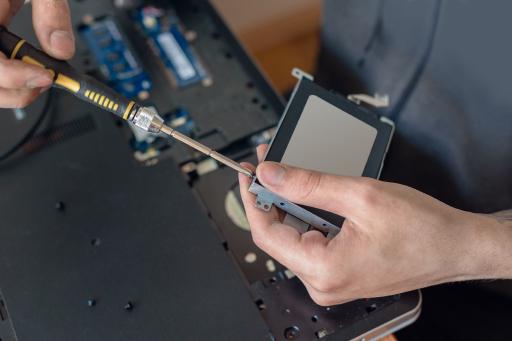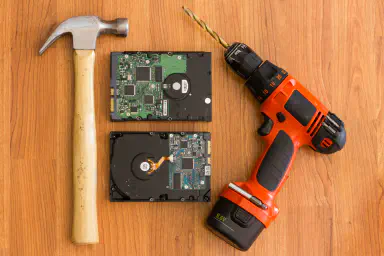How and When to Do Data Recovery at Home
How and When to Do Data Recovery at Home
DIY data recovery is possible but it can be risky. Learn about when it’s appropriate to try recovering data at home.
By Randy Josleyn

There are several options you can try when you have lost some information. In this article, we will look at two main situations: (a) when you’ve deleted the file by accident and (b) when there’s something wrong with your hard drive or Operating System (OS). Here’s a quick summary:
- If the file’s been deleted by accident:
- Check the Recycle Bin.
- If it’s not there, check your backup.
- If it’s not there either, stop using your computer and call us for help.
- If there’s something wrong with your OS and you lost data:
- Stop using your computer.
- Call us for help.
Read on for more details.
When you’ve accidentally deleted your file
Recover from the Recycle Bin or Trash
First, if you have simply deleted the files by accident, you have several options available to you. Whether you are using a Mac or a Windows PC, you should always first check the Recycle Bin (Windows) or the Trash (macOS). Computer Hope has a good tutorial on how to do this. It’s quite simple. Here’s a quick summary for recovering from the Recycle Bin on Windows:
- Open the Recycle Bin and find your file.
- Right click it and select “Restore”; or, drag and drop it outside the Recycle Bin
The procedure is similar for Trash on Mac. Check Apple’s official documentation for specific instructions. If you’ve looked in your Recycle Bin or Trash and you can’t find the file, you’ll need to explore other ways to get your file back.
If the file is not in the Recycle Bin or Trash
If you deleted the file but you can’t find the file in the Recycle Bin or Trash, that might mean that it was permanently (but not necessarily irretrievably) deleted.
Please note — after your file is permanently deleted, using your computer or installing software increases the chances that it will be lost forever. Please do not install software or use your computer if you permanently deleted the file and wish to recover it intact.
If your information is important to you, call us for help.
Even if the file was permanently deleted, there are still some recovery options. The best option is if you have a backup of your information. If you don’t have a backup — tsk, tsk — read more about how to back up your data.
Check your backup system
If you made a backup before, you can check to see if the file you need is there. On Windows, you can recover files either through “Backup and Restore” or via “previous versions.” See Microsoft’s support site on recovering lost files for specific instructions. Mac users can use the backup system called Time Machine to back up their files. See Apple’s official documentation on recovering files with Time Machine for specific instructions on how to do that.
When something is wrong with your system
If your computer won’t start or the OS has crashed, this may be an indication of a serious issue with your hard drive. Your hard drive may have a firmware or mechanical problem. In either case, the only route to recovery is via specialized hardware and software along with the expertise to diagnose and address the specific issue.
Call us for help
If your computer has crashed and you need your information back, or if you accidentally deleted your files, your safest bet is to stop using your computer and call us for help. We have nearly twenty years’ experience in data recovery. If your information is important to you, you should stop using your computer to protect your data, and call us for help today.

